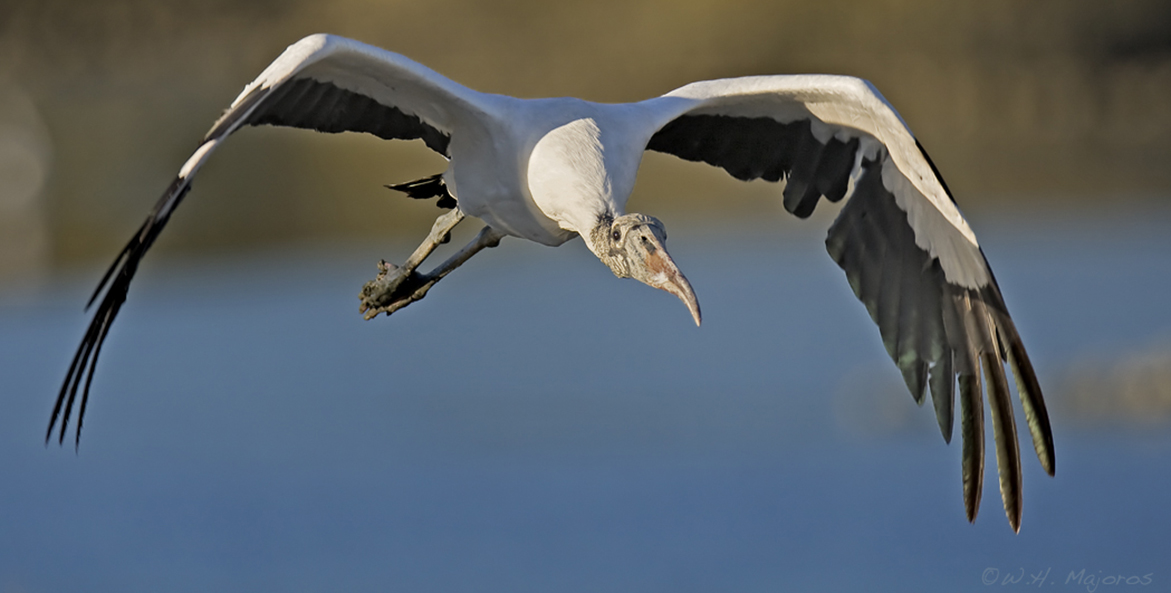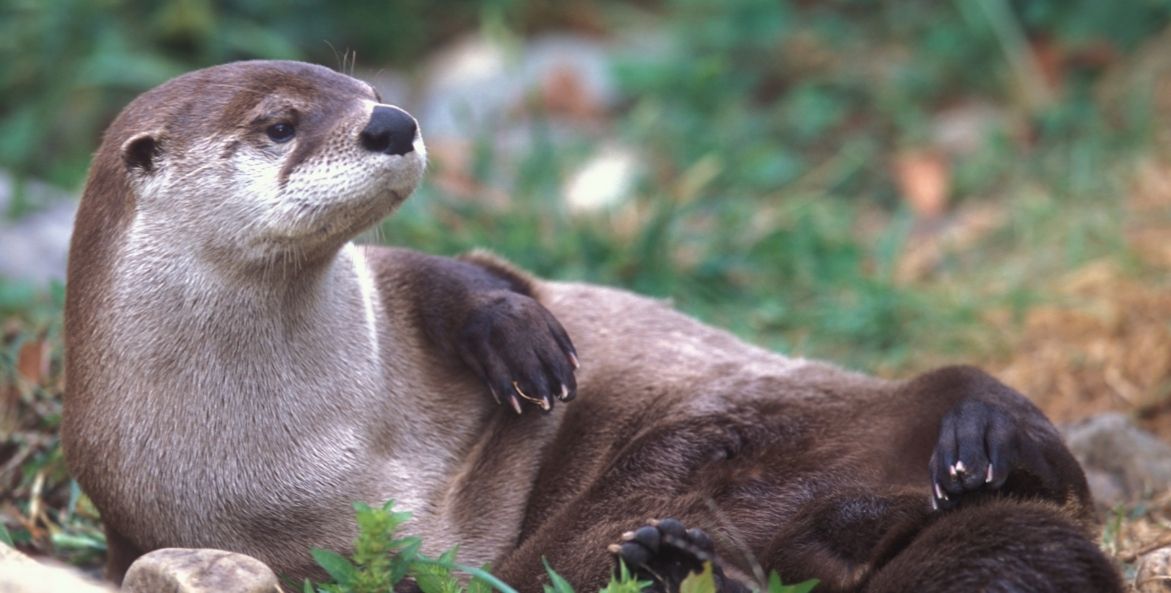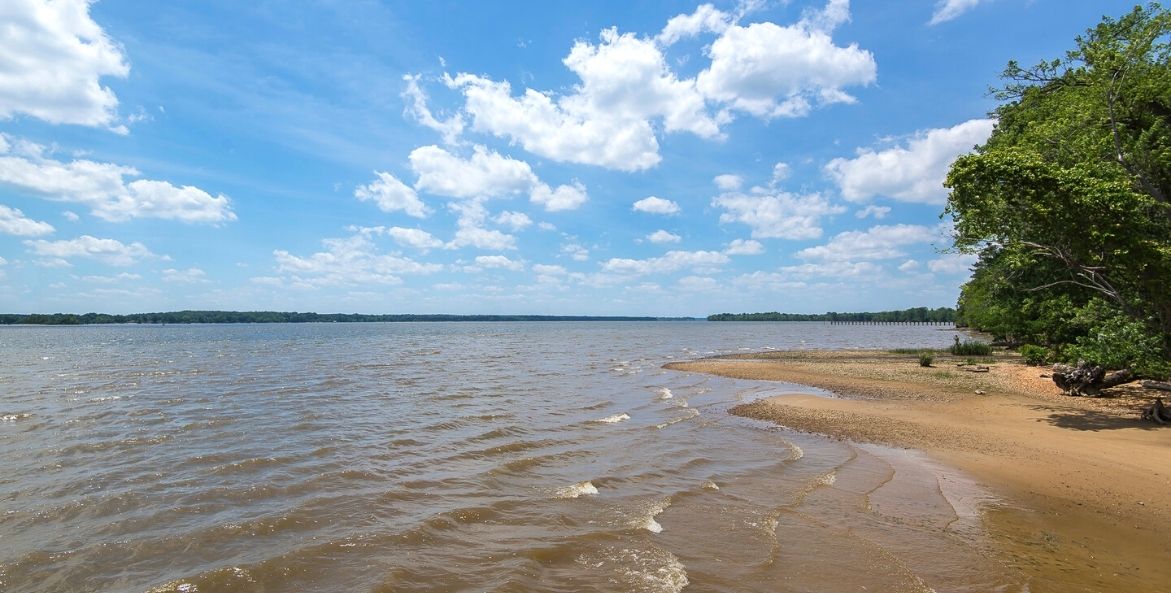Rivers and streams are the connective tissue binding together the Chesapeake Bay's 64,000-square-mile watershed. They are diverse and rich in life, providing homes for creatures like river otters as well as respite and recreation for those of us who call this region home—including in the heart of cities like Richmond, Virginia, where the James River is an urban oasis. Sometimes, they bring unexpected visitors, too, like the tropical Wood Stork found foraging this month along the C&O Canal in Maryland. In Pennsylvania, farmers are planting trees in their pastures—a practice known as silvopasture—to protect nearby streams and benefit their livestock. And while this month's news wrap-up includes some promising developments for restoration efforts, it also shows there is much more work needed to clean up rivers and streams across the watershed.
VIDEO: Richmond's River
The James River is an oasis in the heart of Virginia's capital city, providing a place to play and recharge for thousands of residents and visitors alike. But sewage spills continue to show how vulnerable the river remains and highlight the need for more work and investment to ensure it's a healthy place all can enjoy.

Wood Storks like this one in flight in Huntington Beach State Park, South Carolina, typically are only found in Florida, Georgia, and South America. Recently, one popped up in the Chesapeake Bay watershed.
Bill Majoros (CC BY-SA 2.0, via Wikimedia Commons)
A Tropical Wood Stork?
A rare visitor was found foraging for food in the C&O Canal near the Potomac River this month. The tropical Wood Stork was likely blown in by Hurricane Ida, but researchers say other tropical birds could appear in the Chesapeake region more frequently as a changing climate pushes them north.
VIDEO: Cows Love Trees, Too
Trees help protect streams from water pollution, but farmers (and their cows) are discovering other benefits, too—including increased shade, better herd health, and improved grazing quality. Fiddle Creek Dairy in Pennsylvania is one of five farms participating in a three-year study about silvopasture—the deliberate integration of trees and grazing livestock operations on the same land.

Hal S. Korber
You Otter Know
Why are North American river otters so playful? Can you guess how many calories they need in a day or how much of their lives they spend on land versus water? Learn five facts you otter know about this beloved and elusive Chesapeake critter, including what they mean for ecosystem health and what threatens them.
Video: Around the Bay in 60 Seconds
In this month's news roundup: mistreated wastewater raises concerns at Baltimore treatment plants, Pennsylvania's governor calls for funding to build resilient farms in Pennsylvania, harmful algal blooms hamper recreation in Hampton Roads and the North Fork of the Shenandoah River, Omega Protein spills hundreds of thousands of dead menhaden, and more.
What You Can Do
- We've got a slew of Bay-saving events coming your way. Join us! In Maryland, sign up for our annual Rod & Reef Slam fishing tournament, tree plantings, or oyster gardening. Take a look at our events calendar for other opportunities.
- Our CBF educators are back in the field this fall! Teachers and students, come learn outside with us on any of our canoe, boat, or land-based experiences.
- Agriculture is an integral part of the Bay watershed's culture, heritage, and economy. One easy thing you can do for our farmers right now is to sign our pledge and show your support for federal investments in critical agricultural conservation practices that help our environment, combat climate change, and benefit local economies.
- Match Alert: Now through September 30, your gift to save the Bay will be matched dollar-for-dollar up to $30,000 thanks to our friends at Leidos. Donate today.
The $300 per person tax-deduction that was passed last year as a part of the COVID-19 relief bill is still in effect, so that's yet another reason to give (please consult with your tax advisor).



